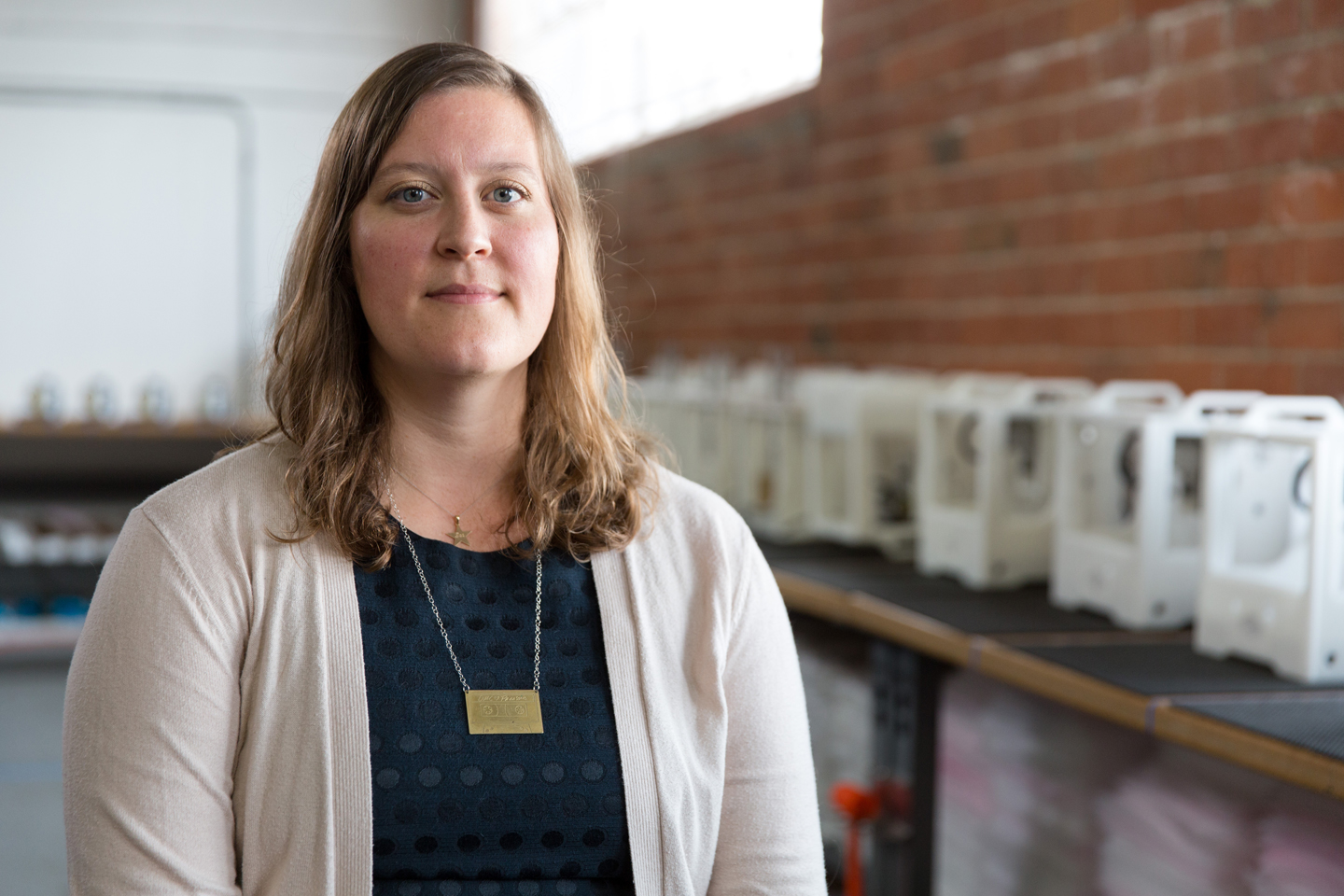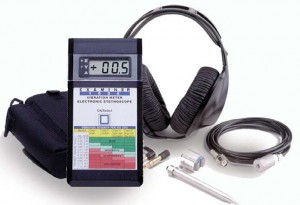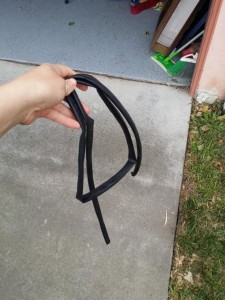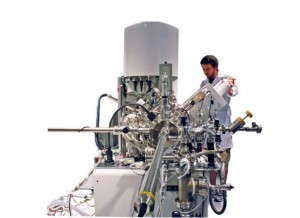Danielle Applestone, CEO of Other Machine Co.

Cool Tools Show 073: Danielle Applestone
Our guest this week is Danielle Applestone. Danielle is a material scientist, co-founder and CEO of Other Machine Co., the leading manufacturer of high-precision desktop CNC milling machines. Formerly, Danielle ran a DARPA project to develop digital design software and manufacturing tools for the classroom. Danielle’s team took that technology and launched Other Machine Co. in 2013.
Subscribe to the Cool Tools Show on iTunes | RSS | Transcript | Download MP3 | See all the Cool Tools Show posts on a single page
Show notes:

Monarch Instrument Examiner 1000 ($1,200)
“I came across this electronic stethoscope as part of our manufacturing process. We would get motors from a manufacturer that looked balanced and met a spec, but once we put the whole machine together, sometimes a machine would have a lot of vibration and we didn’t know how to quantify that vibration or to know what was good or what was bad. … There’s a lot of intuition when you’re putting something complicated together like “Well, it feels right,” or “It doesn’t feel right.” That’s really hard to do so we found this amazing thing, which cut a ton of time out of our manufacturing process and now we have beautiful graphs of everything. We know exactly what things vibrate and which ones don’t. You can use it on musical instruments. It’s an amazing tool. Once you have one you realize how much you needed one in your life.”

Bicycle inner tubes with holes in them
“I came across bicycle inner tubes with holes in them through a friend who had made a sail boat that was attached only with these bicycle inner tubes —it was a catamaran. The reason why they’re so important is they are waterproof, they stretch, and you don’t have to tie them in knots, so you can latch things together really quickly and then undo them, and make a new configuration. … They’re used a little bit like a bungee cord, but bungee cords are really expensive and you have to make do with the hooks whereas if you take a long inner tube that has a hole in it — you’re not going to use it anyway — slice it up into strips. It’s like a variable length bungee cord, but it also doesn’t have the hooks so you can just wrap it around itself and tuck it under and it’ll stay put.”

The Encyclopedia of Country Living ($20)
“This is a great tool. This is so comprehensive for every little thing. I moved out into Kentucky and lived on 1200 acres for a while and didn’t have much. It was the go-to for, “Okay, we need to build a shanty for chickens. We need to learn how to clean a chicken.” It has everything, like “How to bury your own dead.” … The thing that’s magic about this book is it has the right level of detail, just enough to get yourself in trouble. … It’s just enough to get you going and then you can kind of DIY the rest. I still use it. The pages are all rained on, and moldy, and whatever, but it’s well loved.”

X-ray Photoelectron Spectrometer
“Yeah, well we just went from just about the lowest tech to the highest tech thing I’ve ever laid my hands on. … What’s great about this tool is it’s super useful for telling what’s on the surface of materials. I used to be a material scientist and I worked on lithium ion batteries. The surface is where all the action is. There’s not a lot of techniques out there that are nondestructive. Usually, if you invent a material, you have a sample, you have to crush it up or put it on a slide, you have to do something to it that mixes the surface in with the bulk. Sometimes, you don’t want that. … The X-ray Photoelectron Spectrometer is amazing because you can just put a sample in and it’s nondestructive …. How it works is you take a beam of x-ray, so you shoot photons at the surface of your material and those photons have enough energy to pick off electrons. A photon goes in, ejects an electron, and then there’s a collector that collects that electron and measures the kinetic energy, measures how fast it was moving. Then, if you know the energy of your x-ray going in, and the energy of that electron that you caught, you can just subtract and figure out how tightly bound was that electron to my surface. What’s cool about that is if you know how tightly a molecule was hanging onto it’s electron, you can tell what that molecule was. Whether it was a sulfur dioxide, or sulfur monoxide, the electrons that are swimming around those molecules will be held differently depending on what those molecules are. … The place that I used one was at the University of Texas at Austin. They’re quite common, but they’re usually at universities, or national labs … They’re millions of dollars.”









